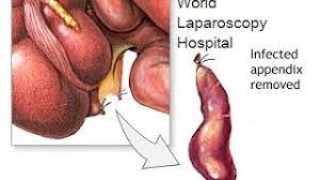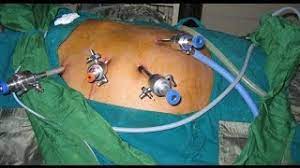Laparoscopic cholecystectomy in patients with ventriculoperitoneal Shunt and adhesion
Add to
Share
325 views
Report
2 months ago
Description
Laparoscopic cholecystectomy (LC) is the gold standard for the surgical management of symptomatic gallstones. However, performing LC in patients with a ventriculoperitoneal (VP) shunt presents unique challenges. The presence of a VP shunt increases the risk of intra-abdominal adhesions, complicates port placement, and raises concerns about shunt integrity and potential infection. Additionally, adhesions from previous abdominal surgeries or shunt placement can further complicate dissection. Preoperative Assessment Imaging: Preoperative ultrasonography or CT scan may help assess gallbladder pathology and identify adhesions. Shunt Evaluation: Neurosurgical consultation is recommended to evaluate shunt function and determine perioperative precautions. Temporary shunt clamping or antibiotic prophylaxis may be advised. History of Abdominal Surgery: Patients with prior laparotomy or shunt revisions are at higher risk for adhesions. Surgical Considerations Port Placement: Avoid direct injury to the VP shunt. Use open (Hasson) technique for the first port insertion if adhesions are suspected. Ports should be strategically placed away from the shunt catheter trajectory. Adhesiolysis: Careful blunt and sharp dissection is required to release adhesions. Laparoscopic adhesiolysis should be done under direct vision to prevent shunt damage or bowel injury. Pneumoperitoneum Management: Standard insufflation pressures are usually safe. Continuous monitoring for increased intracranial pressure is advised in select patients, especially in those with non-adjustable shunts. Shunt Precautions: The shunt catheter should not be clamped unless advised by a neurosurgeon. Avoid electrocautery near the shunt to reduce the risk of thermal injury. Intraoperative irrigation with saline should be done cautiously to avoid shunt contamination. Postoperative Management Early ambulation and monitoring for shunt function are crucial. Watch for signs of shunt infection or malfunction such as headache, vomiting, or altered sensorium. Antibiotic prophylaxis tailored to neurosurgical guidance can reduce infection risk. Challenges and Complications Dense adhesions may prolong operative time. Risk of shunt damage or infection, though rare, requires vigilance. Conversion to open surgery may be necessary in complex adhesions or unclear anatomy. Conclusion Laparoscopic cholecystectomy in patients with VP shunts and adhesions is feasible and can be performed safely with meticulous planning. Multidisciplinary collaboration with neurosurgery, careful port placement, gentle adhesiolysis, and intraoperative precautions are key to minimizing complications and ensuring favorable outcomes.
Similar Videos






